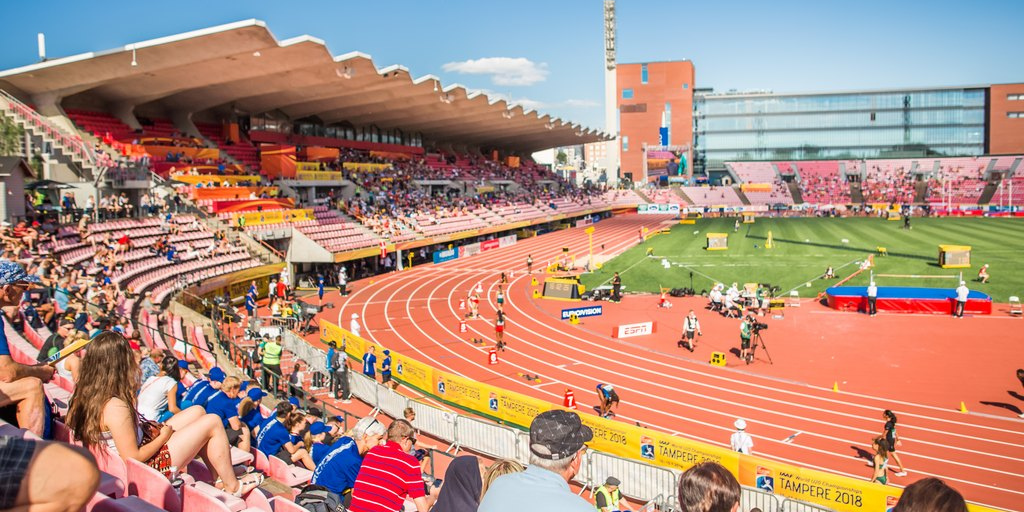While agile experimenting helps link innovations with real needs, it is just as important to put products and services into real use. Smart cities and companies are often partnering in both phases. Tampere, for example, has cooperated with Telia in developing crowd movement data analytics.
The crowd movement data is useful for city designers, public transport planners and organisers of tourism, travel and event services. Mobile networks are an extensive source of this data, and Telia focused on smart cities when it decided to start developing the utilisation of its data pools in 2016.
The production environment had already been built in Sweden and privacy in data processing secured. Next they needed ideas on how to best serve cities with the data.
The City of Tampere was one of the first ones I gave a call when I was looking for development partners in Finland, and we then started two projects, says Petri Seppänen, Head of Sales & Business Development, Data Insights at Telia Company.
Anonymised data provides useful answers
Telia and Smart Tampere programme run an experiment on crowd movement analytics in summer 2017, when pop icon Robbie Williams attracted thousands of people to attend his concert in Tampere. Anonymised data from the Telia mobile network provided valuable answers for event organisers and the City.
– Cities are really interested in knowing when and where from do the crowds arrive to big events, and where they spend their time in the city. The data has been processed in such a way that it is impossible to identify individual users, explains Seppänen.
Based on the refined data it is possible to plan smoothly running services and organise traffic and transport as well as understand the economic impacts of an event in the city. Another Tampere project was about utilising the mobile network data in public transport planning. Understanding crowd movements is crucial when planning for example bus routes that respond better to the actual user needs.
Telia crowd movement analytics had a fine start, and nowadays it is used in the Nordics and being launched in the Baltics. Helsinki Regional Transport Authority (HSL) uses updating movement data to develop transport networks. Shopping centres are also interested in the crowd movement data, Seppänen says.
Joint development to tune the tools
Piloting and experimenting with the public sector has, according to Seppänen, many values for Telia. Joint development allows deeper understanding of the customers’ operations.
We need to understand processes to be able to create relevant data views and new solutions that help cities with their planning and decision-making. Partners, like the City of Tampere, are vitally important in this work, Seppänen says.
Telia is developing online tools as a continuous service. City Vitality Insights, based on crowd analytics, is one of the latest additions in this field and Tampere was one of the first cities to start piloting it. A city that aims to be the most interesting city of events and experiences in the Nordics needs fact-based data for event activities development.
– The new Ratina Shopping Centre opened during the pilot project, and the piloted service showed us clearly how it changed the way people move in the city centre. From the City’s point of view, the most useful features in a tool like this are continuous and real-time measuring and ability to monitor the change, says Markus Joonas, Project Manager at the City of Tampere.
Data for knowledge-based management
While demos make headlines more easily, the real effect of the data-based services may be overlooked. Seppänen would like to remind that effectivity is just the thing that is sought after in all joint projects.
What kind of effect do tools such as Telia Crowd Insights method have, then? Seppänen says the biggest transformation in city planning and development will ensue from the fact that real-time data will be available at all times. If a new bus route is established today, the city planners and decision-makers will know almost immediately how it changes the way people move in the city.
The mobile network data also gives voice to the majority that is not eager to comment the changes vocally. The service will show what actually happens, says Seppänen.
– The City of Tampere’s aim is to generate better data to support knowledge-based management and decision-making. When developments can be made visible using clear numbers, the effects of decisions can be assessed more accurately and also communicated more easily, says Joonas.
The City of Tampere has implemented experiments on movement data with other actors as well, e.g. with Hypercell. By testing different solutions the City can recognise their advantages, challenges and suitability in various use cases.
Photo: Laura Vanzo
